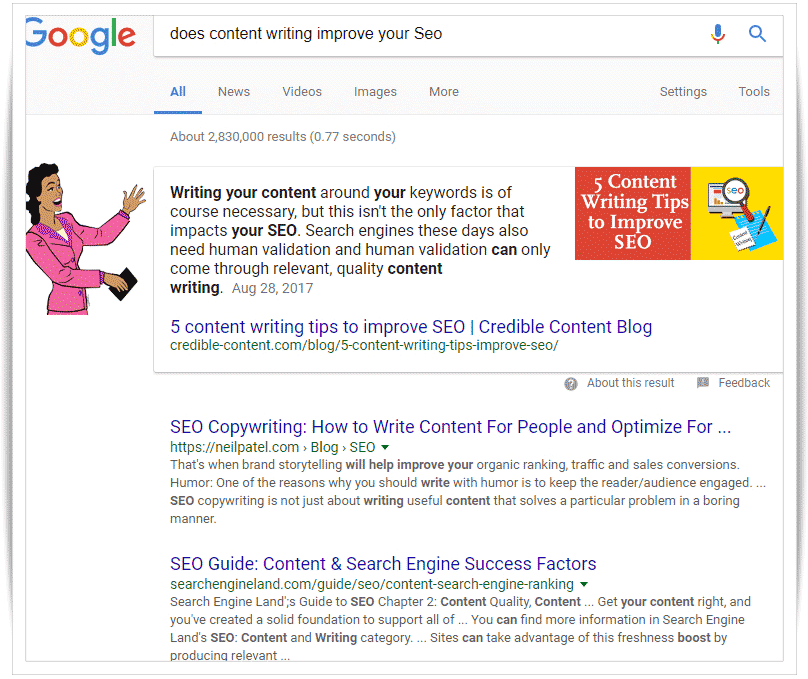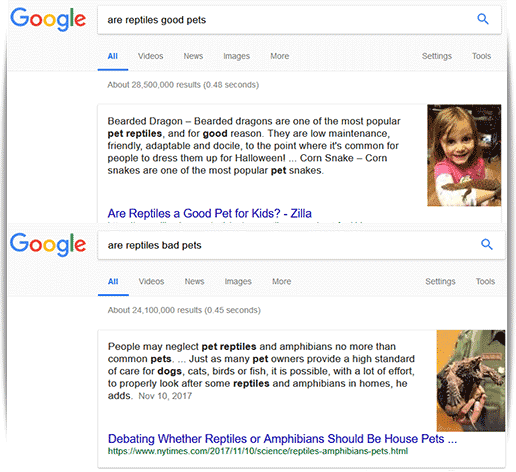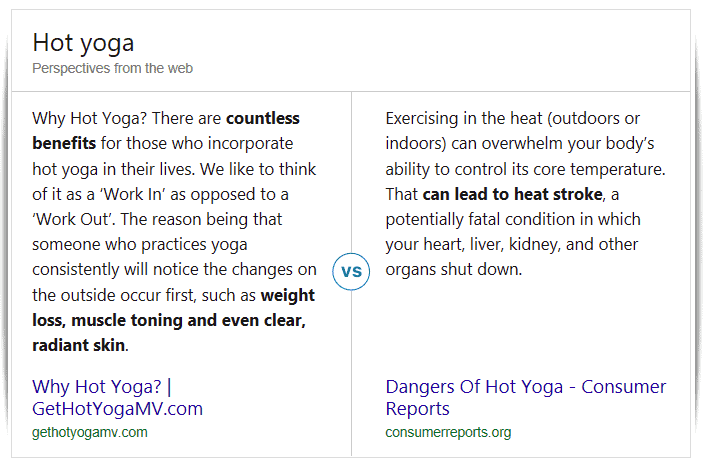
Sentiment analysis, content marketing and SEO
Content marketing and SEO are not just intertwined, they are also constantly evolving as companies like Google constantly try to figure out how to churn out the best possible results.
Algorithms today can analyze billions of messages in the form of text, images and videos on the Internet and tell you the exact sentiment people have about your business, about you, about your political party, and pretty much anything people feel sentimental about.
This is advanced technology and not everyone can have it. But, as a business, you can develop a content marketing strategy that can help you create content that depicts positive sentiment.
This blog post on Skyword explains in detail what sentiment analysis means and how it is changing SEO, and improving user experience. The post says that MIT has developed an algorithm that can even interpret sarcasm through the emojis people have used in their social media updates while talking about brands.
According to this Search Engine Journal report, Bing has already started using Sentiment Analysis to influence search results, and Google is contemplating it.
In fact, Google, to an extent, has already been using this technology, or something similar, to show you Featured Snippets.

Example of Google featured snippet
Here are two blog posts that I wrote about Google’s featured snippets:
- Is there a definitive way of ranking in Google’s featured snippets?
- Google’s Featured Snippets: How to rank at #1 with strategic content writing
To show Featured Snippets, the Google algorithm tries to find the intent of the search and then goes through the links it has crawled and finds out the portions that exactly answer the question being asked in the query. It interprets the sentiment.
The problem with the current version of such snippets is that they tend to provide just one perspective.
For example, in the above Search Engine Journal blog post, the author takes the example of “are reptiles good pets?”

Same intent but different Google query results
It was noted that Google showed a different snippet for “are reptiles bad pets?” whereas, search engine experts like Danny Sullivan feel that the answer should be the same because the question is more or less the same – you want to know whether reptiles are good pets or bad pets.
Microsoft Bing, instead of shuffling between different snippets, has started showing two perspectives side-by-side. Here is a screenshot from their blog post on the same topic:

Sentiment analysis used by Microsoft Bing
What exactly is sentiment analysis, especially in terms of content marketing and SEO?
It means using online tools to analyze various pieces of writing (not necessarily on your blog or website) to gauge what sort of sentiments people have about your business.
A special thing about sentiment analysis is that it is not just the black and white of “you are good” and “you are bad”. Though, “good” and “bad” are also very strong sentiments, there are many subtle emotional tones that people use to talk about your business and the subtle differences can make a big difference on whether people decide to do business with you or not. Take for example:
“Yes, a great piece of writing, indeed!”
“Do you really think it is a great piece of writing?”
“This piece of writing could have been better.”
“I have certainly seen better examples of writing.”
“Your writing is good, but anyway I’m going to go with another content writer.”
Now, as a human, if you go through these lines, you can interpret them as positive, negative, comparative and even cynical (the first one).
Suppose, I have been gathering all the feedback from my content writing clients and storing it somewhere over the years. A good sentiment analysis tool can tell me what the overall experience of my clients with my content writing service has been. Of course, more data there is, better are the results.
The above-mentioned data can be gathered from multiple sources, not necessarily from the emails that you get from your customers or clients. You can get the data from your comments section, from reviews section, and even the chat transcripts that you might have been saving.
If you want to widen the net, you can use hashtags, trends, keyword strings and your brand name to collect data from all over the Internet and then run it through your sentiment analysis software.
Sentiment analysis isn’t just done to know what people think about your business, it can also be done to know what people think about a particular aspect of life or doing work or having a vacation and then accordingly you can make changes to your business.
So, how does sentiment analysis have an impact on content marketing and SEO?
As a business you can use specialized sentiment analysis tools to monitor conversations on the Internet and social media and then tailor your content to serve your customers and clients better.
As mentioned above, Bing is already using sentiment analysis to decide what results to show for your search queries, and Google is in the process of doing so.
For big brands, the search engines may analyze the conversations people have about these brands on various platforms and then rank their content accordingly.
Suppose, there is a greater number of people criticizing the latest version of the iPhone. So, instead of showing a blog post from Apple that lists great things about the latest version, the search engines may decide to rank another blog post highlighting the negative things about the phone better than Apple’s blog post.
Similarly, if people share your blog post on various platforms with “positive sentiment” its search engine rankings may improve, compared to a greater number of people sharing another blog post on similar topic from another blog, but with “negative sentiment”.
So, as a small business, how can you improve your content and your content marketing by observing sentiment analysis, and consequently, improve your SEO?
Age-old wisdom comes into picture: create and publish relevant content. It all boils down to that.
Why?
What is positive sentiment anyway? You get positive sentiment in the form of endorsements from people who read your content, who watch it, use it to better their lives or the way they do their business or make purchasing decisions.
How do they endorse good content? They link to it and surround it with positive expressions (a great example, great insight, well said, what a piece of writing, nice tips, and so on).
When your content is posted on social networking websites people comment on it, like it, share it and carry out other activities that prove that they appreciate your content.
Sentiment analysis and SEO
Although Google hasn’t completely adopted sentiment analysis, the search engine has been using “search intent” to show featured snippets.
There is another technology that is called RankBrain that observes user behavior when people find your content on search results. If search engine users find your content on Google, go to your page or blog post, spend a few seconds over there, come back to Google and carry on the same search, it tells Google that the user didn’t find what he or she was looking for and hence, your content doesn’t solve the purpose of being ranked for the search term it is currently being ranked for. Your content loses its ranking.

How to write content for Google RankBrain
Alternatively, suppose currently a link doesn’t rank well but a user finds it on second or third page, goes there, spends some time and then no longer carries the same search back on Google, Google thinks that your content has solved the purpose of being ranked for the search term. Your content gains its ranking.
This is also a form of sentiment analysis because Google observes how people react to individual search results and then this has an impact on your search engine rankings.
Concluding remarks on sentiment analysis
The success of your content marketing depends a lot on your ability to understand what your audience needs and then providing it.
This very much takes care of positive sentiment about your content in general, and your brand in particular. If people like your content, there is a great chance that they are also going to like your brand, although, if they don’t like your product or service, it doesn’t really matter how great your content is. Ultimately, it is the business experience that matters, especially when you intend to promote a business through content marketing.
People generate and share content everywhere these days. You are not directly in control of the content generated by the others. You are only in control of the content generated and published by your business.
So, how do you control content generated by your prospective and current customers and clients?
By not giving them a reason to write content with negative sentiments. Provide them exceptional quality products and services then follow with great service.
It’s been observed that people leave negative feedback more easily than positive feedback. If someone has a lousy experience with your business there is a greater chance of him or her venting it out than someone having a good experience and going to the extra length of putting in some good words about your business.
Hence, publish high-quality content and then follow it up with a great business proposition. You will maintain a positive sentiment around your business.













